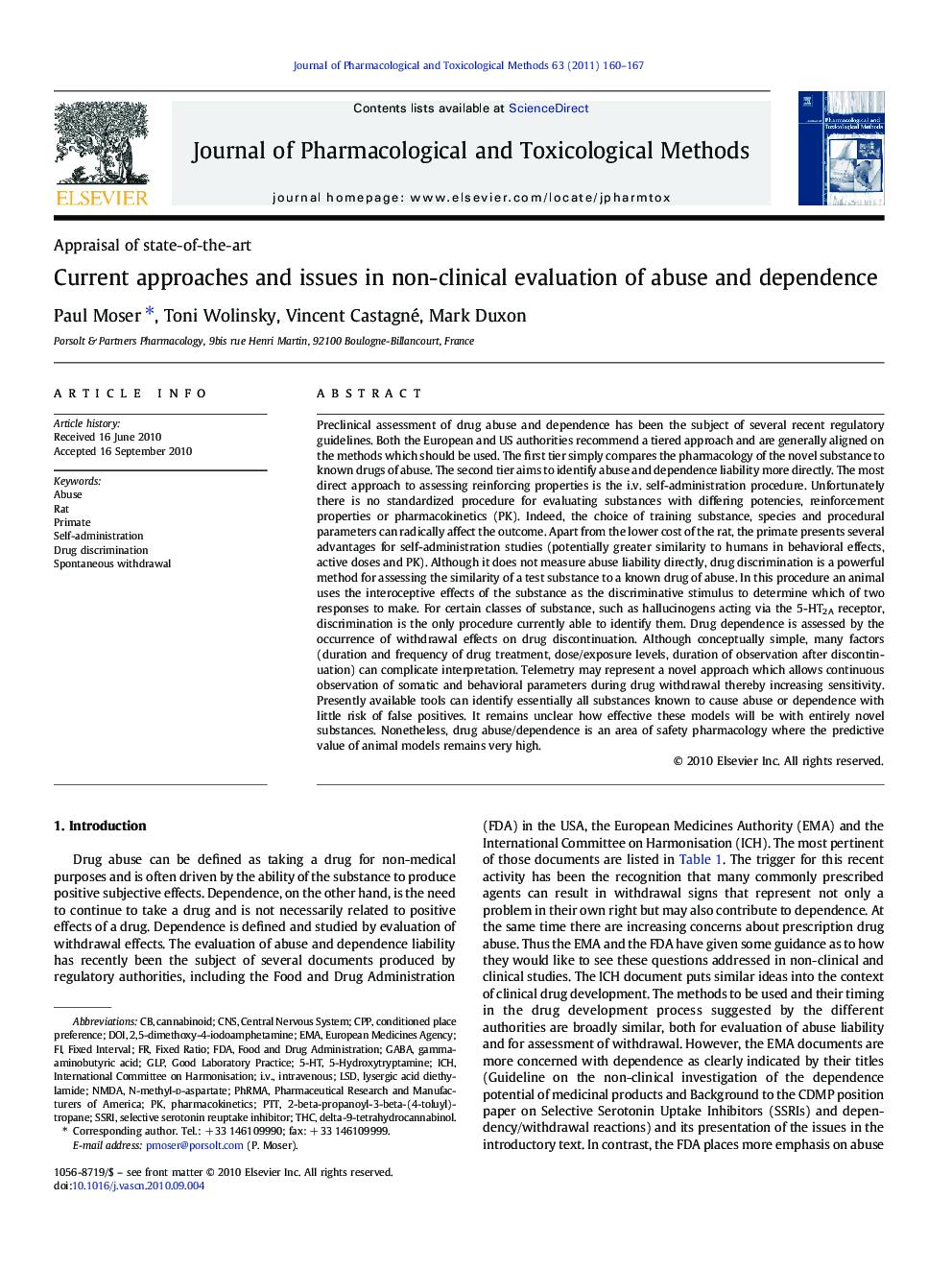| کد مقاله | کد نشریه | سال انتشار | مقاله انگلیسی | نسخه تمام متن |
|---|---|---|---|---|
| 2549193 | 1124506 | 2011 | 8 صفحه PDF | دانلود رایگان |

Preclinical assessment of drug abuse and dependence has been the subject of several recent regulatory guidelines. Both the European and US authorities recommend a tiered approach and are generally aligned on the methods which should be used. The first tier simply compares the pharmacology of the novel substance to known drugs of abuse. The second tier aims to identify abuse and dependence liability more directly. The most direct approach to assessing reinforcing properties is the i.v. self-administration procedure. Unfortunately there is no standardized procedure for evaluating substances with differing potencies, reinforcement properties or pharmacokinetics (PK). Indeed, the choice of training substance, species and procedural parameters can radically affect the outcome. Apart from the lower cost of the rat, the primate presents several advantages for self-administration studies (potentially greater similarity to humans in behavioral effects, active doses and PK). Although it does not measure abuse liability directly, drug discrimination is a powerful method for assessing the similarity of a test substance to a known drug of abuse. In this procedure an animal uses the interoceptive effects of the substance as the discriminative stimulus to determine which of two responses to make. For certain classes of substance, such as hallucinogens acting via the 5-HT2A receptor, discrimination is the only procedure currently able to identify them. Drug dependence is assessed by the occurrence of withdrawal effects on drug discontinuation. Although conceptually simple, many factors (duration and frequency of drug treatment, dose/exposure levels, duration of observation after discontinuation) can complicate interpretation. Telemetry may represent a novel approach which allows continuous observation of somatic and behavioral parameters during drug withdrawal thereby increasing sensitivity. Presently available tools can identify essentially all substances known to cause abuse or dependence with little risk of false positives. It remains unclear how effective these models will be with entirely novel substances. Nonetheless, drug abuse/dependence is an area of safety pharmacology where the predictive value of animal models remains very high.
Journal: Journal of Pharmacological and Toxicological Methods - Volume 63, Issue 2, March–April 2011, Pages 160–167